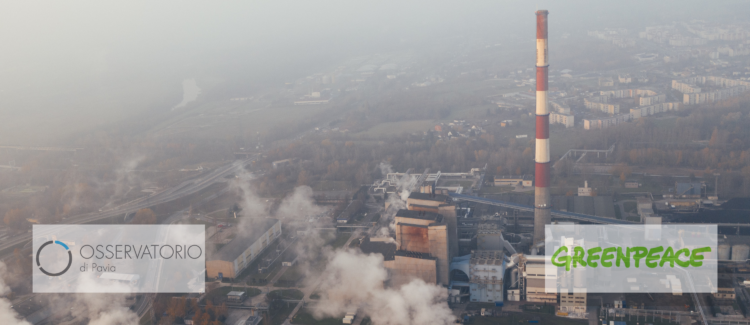Since January 2022, the Osservatorio di Pavia has been responsible for screening the presence of the climate crisis in Italian information. The research, commissioned by Greenpeace Italy, aims to investigate how much attention such a relevant issue receives from newspapers, from the news and from a sample of information broadcasts. The analysis will continue through 2022, and at the end of this time frame, data on a year’s worth of “climate information” will be available.
In the Osservatorio di Pavia’s research, the screening focuses not only on newspaper articles, reports and episodes of broadcasts that talk about the climate crisis in an explicit way, more or less centrally, but also on content dealing with the reduction of greenhouse gas emissions and decarbonisation processes, two issues that are strongly connected with climate change because they are measures to reduce harmful emissions caused by the use of energy produced from fossil fuels (coal, gas and oil).
In recent days, some preliminary results of the research have been published by Greenpeace that concern the press for the first four months of 2022. Some general trends emerge from this preliminary evidence, which can be summarised as follows:
- 351 articles talk about or mention the issue of the climate crisis out of 260 newspaper editions examined;
- only 33% of these have the climate crisis as their central theme, while 24.8% discuss it marginally (among other things) and 41.9% mention it briefly in articles about something else.
- In the first four months of the year, the dominant frames within which the narrative on the climate crisis has been embedded are economic (31%), and political (29.9%). In these data, we can see the prevalence of the story about the energy crisis caused by the conflict in Ukraine as well as the story about the world’s economic efforts toward transformational processes. The environmental context of the crisis is less present in this period.
- Only 22.5% of articles dedicated to the climate crisis, or that mention it, acknowledge or treat the causes of the crisis, which are primarily identified as fossil fuels and CO2 emissions.
- As a result, 29.3% of the articles dedicated to climate change or that mention the phenomenon, talk about, or mention the consequences. The consequences identified are mostly environmental.
- The main subjects to speak about the climate crisis are mainly politicians (30.8% of all individual or collective subjects that are mentioned in relation to the topic), followed by subjects from the economic world (18.3%), experts (14.5%), and environmental associations (11.3%).
- In comparison between the five newspapers examined, Avvenire and il Sole 24 Ore are the newspapers with the greatest number of articles about the climate crisis. Avvenire records proportionally the highest number of articles that deal with the topic in a central way (articles all dedicated to the theme or with a narrative mainly focused on the theme), while il Sole 24 Ore proposes articles on the reduction of emissions (corporate commitments that tend to the reduction).
Click here to download the full report
